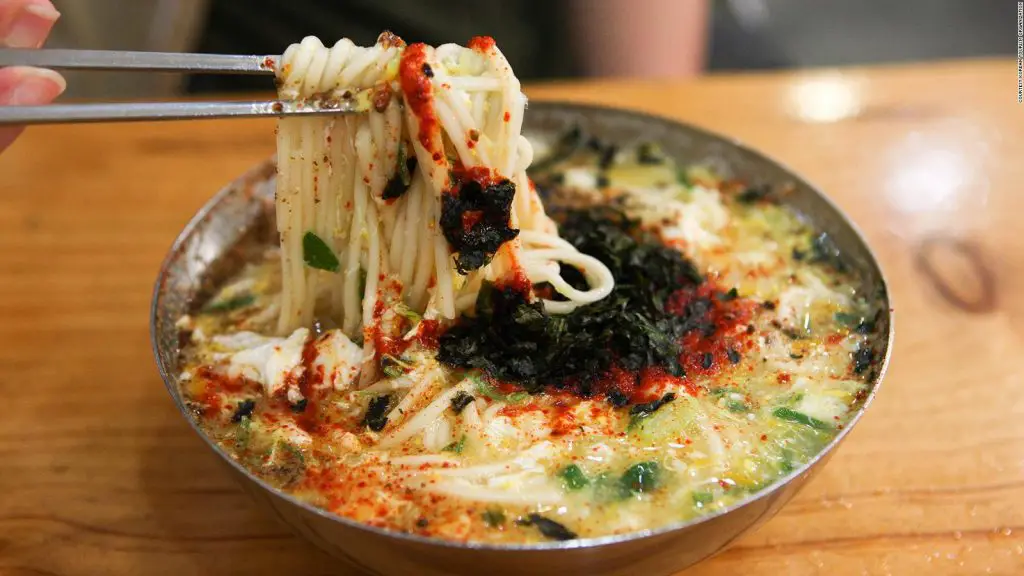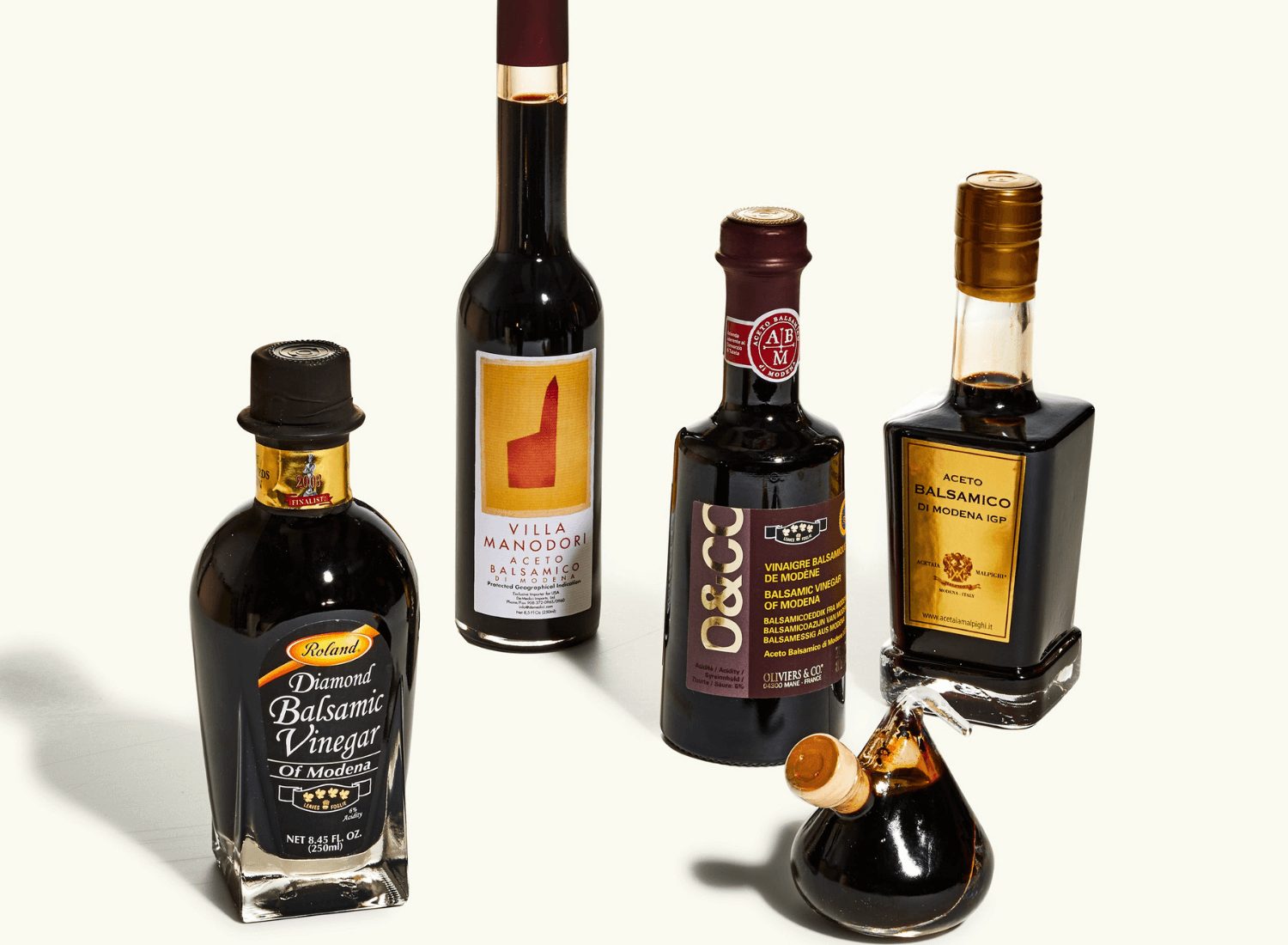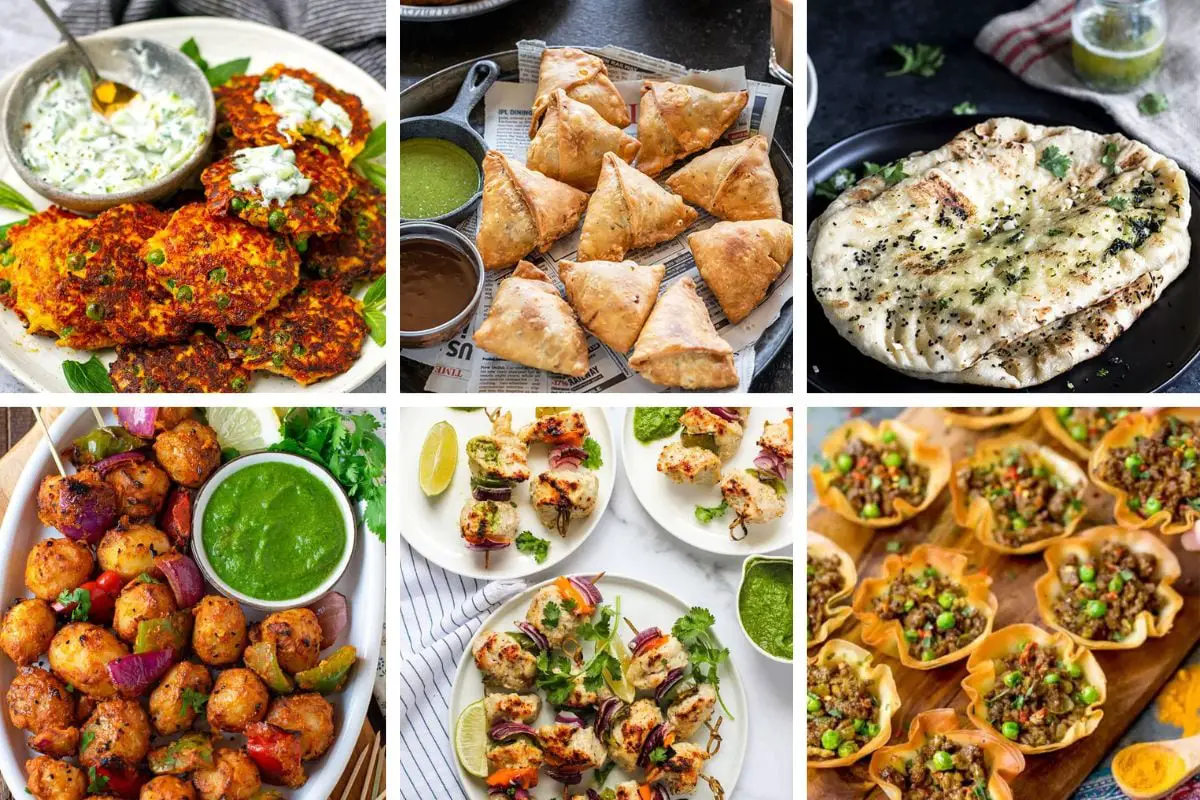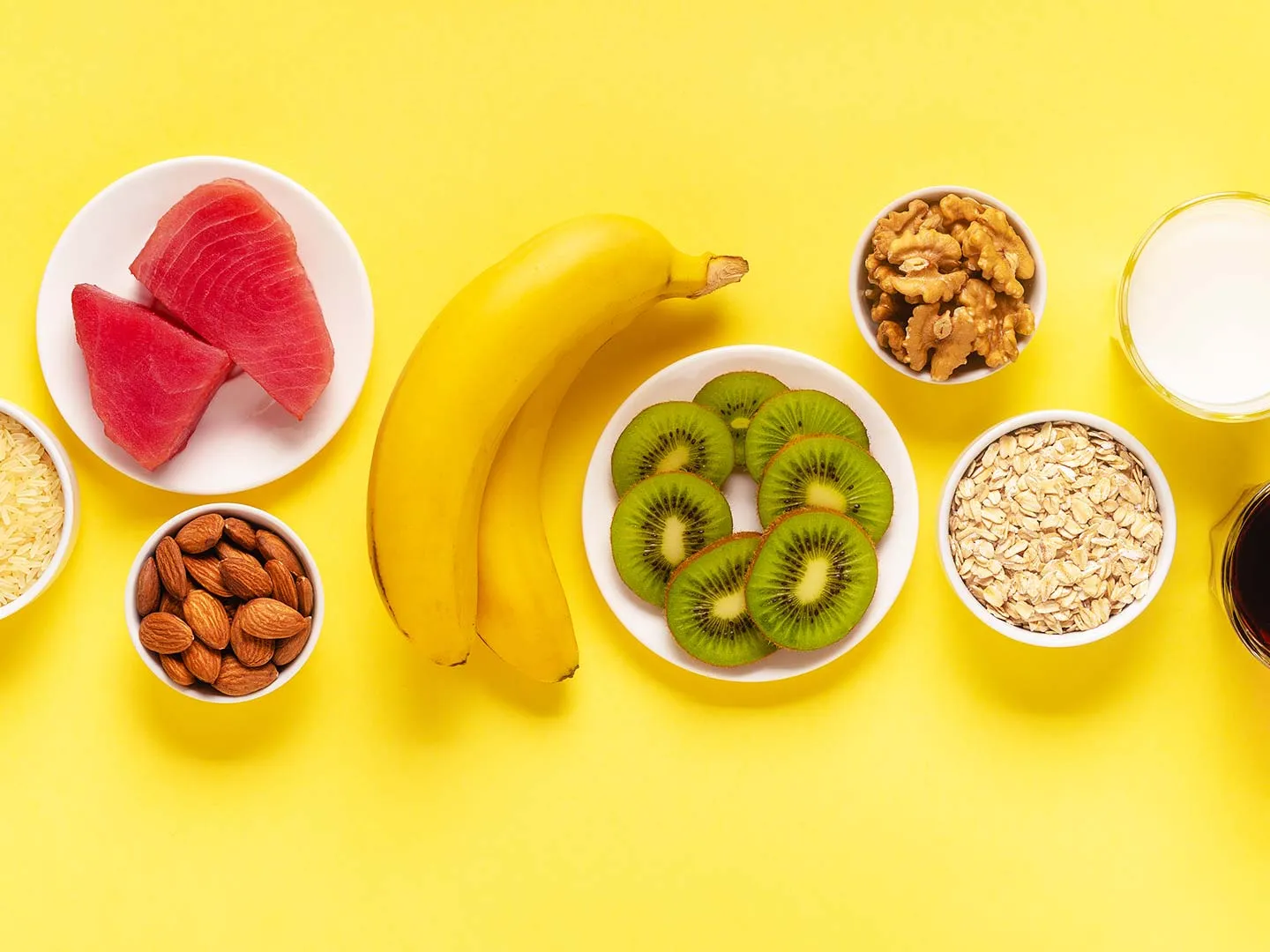Korean dishes are the must cooking traditions and practices of the culinary arts of Korea. Korean cuisine has gone through centuries of social and political change. Korean cuisine has also survived a complex change of the natural environment and different cultural trends
19 Local Foods You Must Try Out in Korea
1. Kimchi
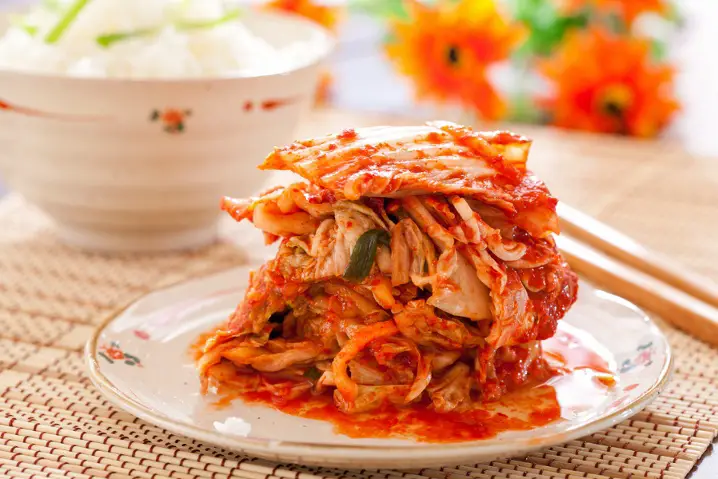
While there are many varieties of kimchi, the most common one is made with napa (cabbage) that is preserved and lightly fermented in spicy red chili flakes. comes complimentary nearly in every restaurant you eat at. It is like a pickle.
2. Hangover stew
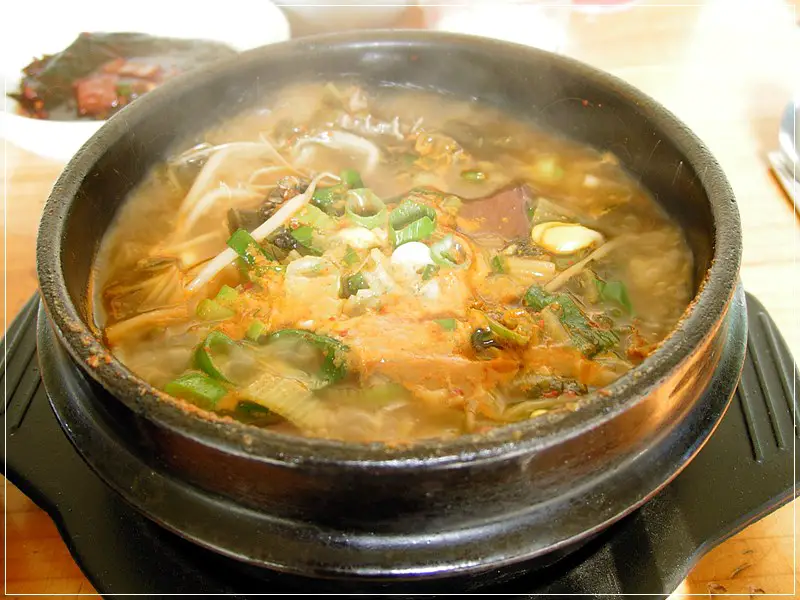
Given South Korea’s well-known drinking culture, it’s not a surprise that its hangover-curing culture is equally as developed, an array of spicy and steamy stews and soups.
Composed of beef broth, cabbage, bean sprouts, radish and lumps of congealed ox blood, the deeply alluring taste does wonders to kick-start your sleepy brain in the morning.
3. Daeji bulgogi
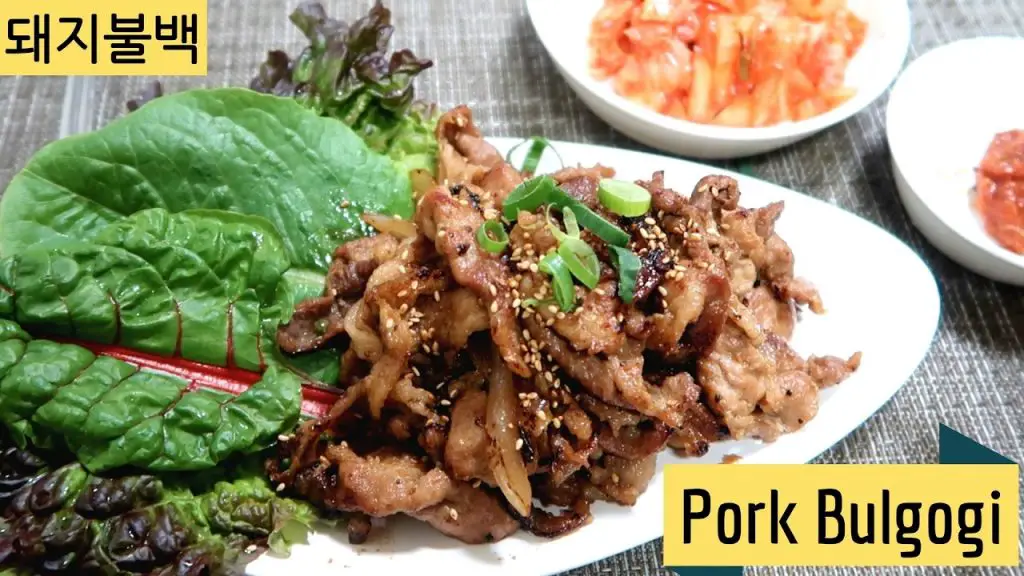
Daeji bulgogi is thin-sliced pork loin marinated in a specially blended red chili pepper paste with various assortments of vegetables. The meat is infused with a mixture of soy sauce, sesame oil, garlic, sugar, ginger roots, rice wine and gochujang, the base sauce for this dish. It is infused for 30-60 minutes to bring out the depth and intensity of flavors.
Daeji bulgogi is grilled or pan-cooked and is usually served with a side dish of lettuce, spinach, or other leafy vegetables, which is used to wrap the slice of cooked meat.
4. Sundubu-jjigae
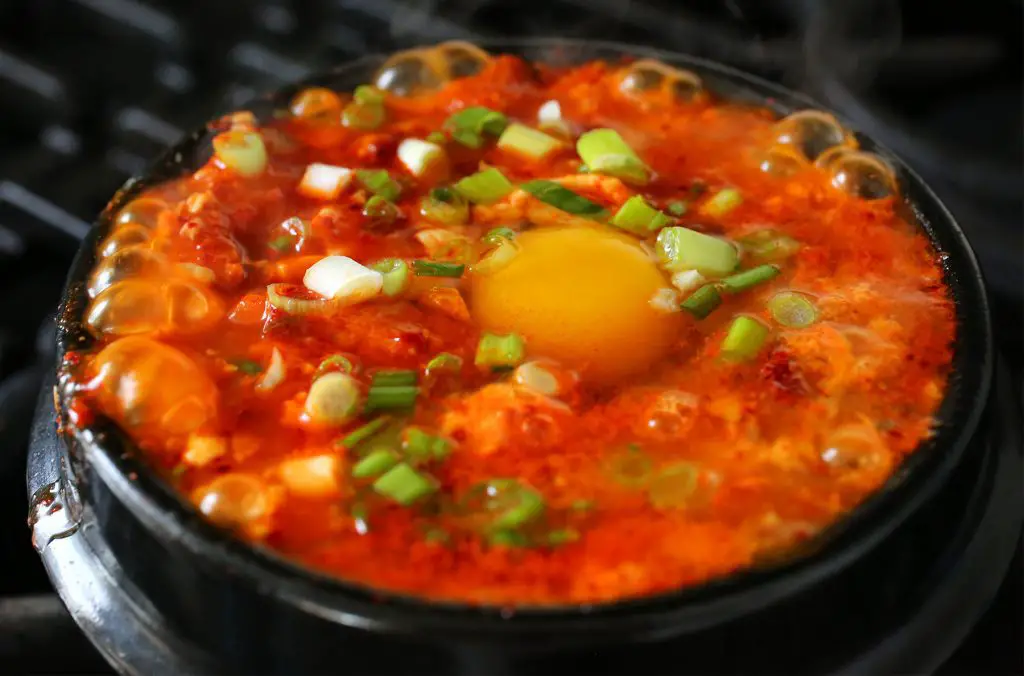
Sundubu-jjigae or soft tofu stew is a type of jjigae (Korean stew). The dish is made with freshly curdled soft tofu (which has not been strained and pressed), vegetables, sometimes mushrooms, onion, optional seafood (commonly oysters, mussels, clams and shrimp), optional meat (commonly beef or pork), and gouchujang (chili paste) or gochu garu (chili powder).
The dish is put together and cooked directly in the serving vessel, which is made of thick, robust porcelain, but can also be ground out of solid stone. A raw egg may be put in the jjigae just before serving and the dish is delivered while bubbling hot. Generally eaten with a bowl of cooked white rice.
Approx price: 5,000 won.
5. Kimchi Jjigae
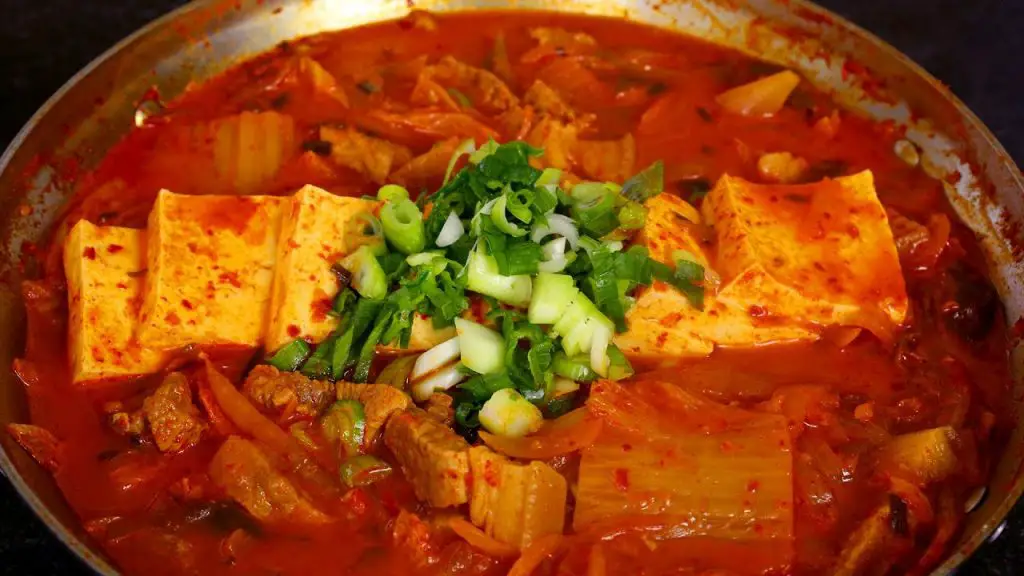
Kimchi-jjigae or kimchi stew is a jjigaes (stew-like) Korean dish, made with Kimchi and other ingredients like scallions, onions, diced tofu, pork, and seafood. (Pork and seafood are usually not used in the same recipe.) It is one of the most available jjigae (stew) in Korea.
6. Seolleongtang
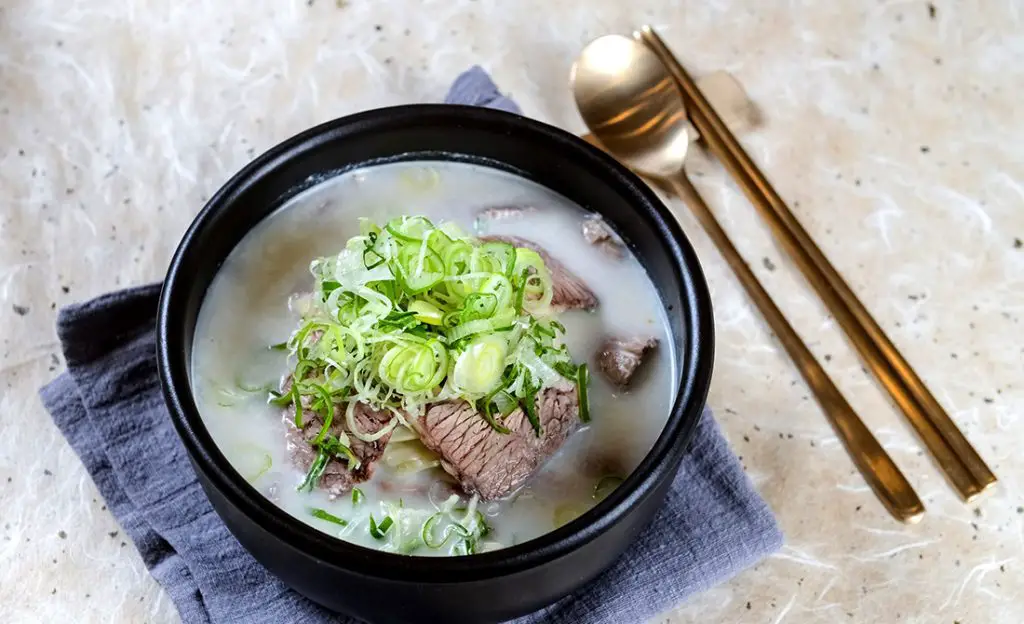
Seolleongtang ox bone soup prepared from ox bones (mostly leg bones), brisket and other meat. Seasoning is generally done according to personal taste by adding salt, ground black pepper, red pepper, minced garlic, or chopped spring onions. It is a commonly available local dish of Seoul.
Seolleongtang is cooked over a low flame over a period of several hours to an entire day, to let the flavor be gradually extracted from the bones. It has a milky off-white, cloudy look and is normally enjoyed together with rice and several side dishes, the rice can also be added directly to the soup.
7. Dolsot bibimbap
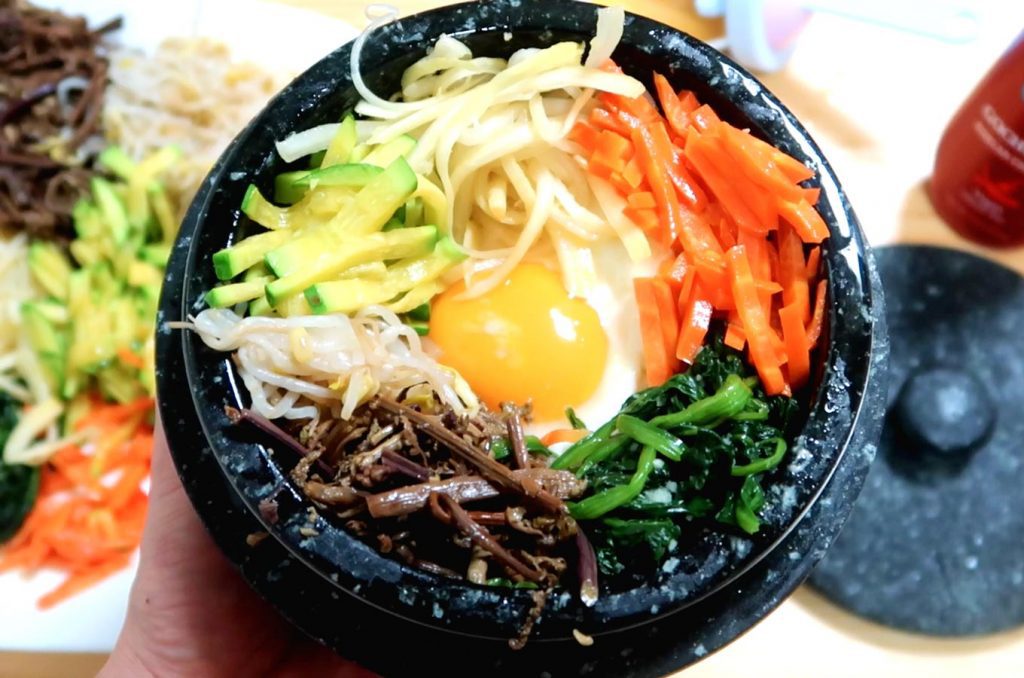
A dolsot is a small-sized cookware made of agalmatolite, suitable for one to two servings of bap (cooked rice). In Korean cuisine, various hot rice dishes such as bibimbap or gulbap (oyster rice) as well as plain white rice can be prepared and served in dolsot. As a dolsot does not cool off as soon as removed from the stove, rice continues to cook and arrives hot and bubbling.
On the bottom of dolsot, there forms a thin crust of scorched rice, to be scraped off and eaten in case of bibimbap, or made into infusion in case of unseasoned rice dishes. In the former case, dolsot can be brushed with sesame oil beforehand to facilitate scraping.
To make sungnyung, the unscorched part of rice is scooped and transferred into another serving bowl right after served, and hot water or tea is poured into the dolsot when it is still blistering. The infusion of loosened chunks of scorched rice remains warm till the end of the meal when it is eaten.
8. Cold Bibimbap
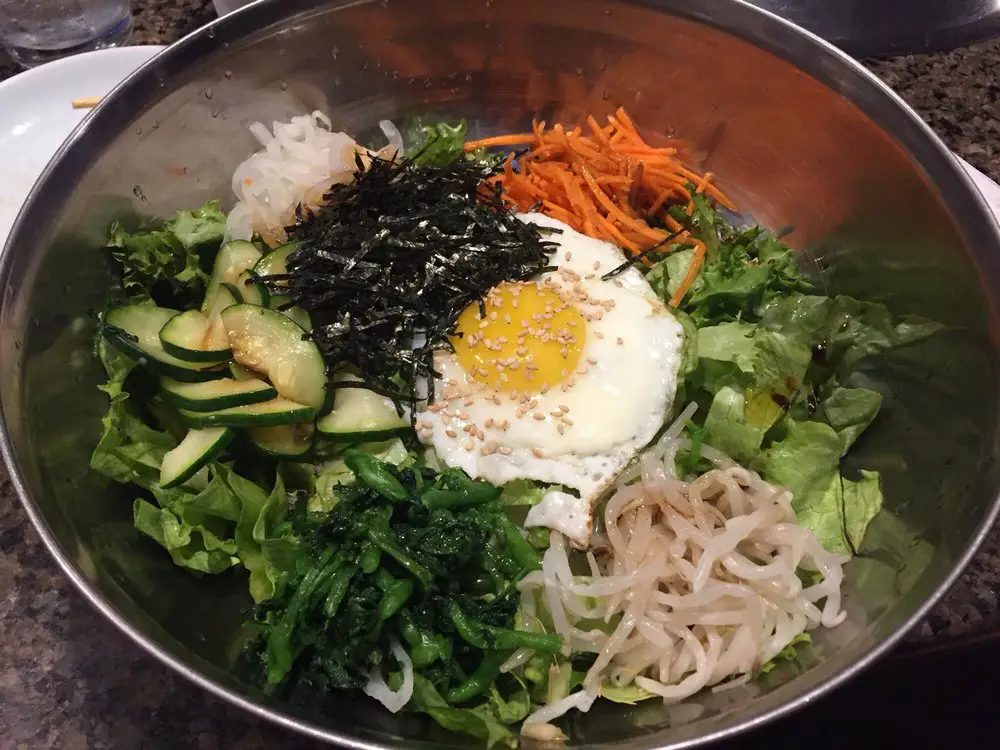
Similar to the Dolsot Bibimbap mentioned above, the cold variation is also served in a metal pot. All the ingredients mixed together and bibimbap makes for a fantastic lunch.
9. Jjinmandu
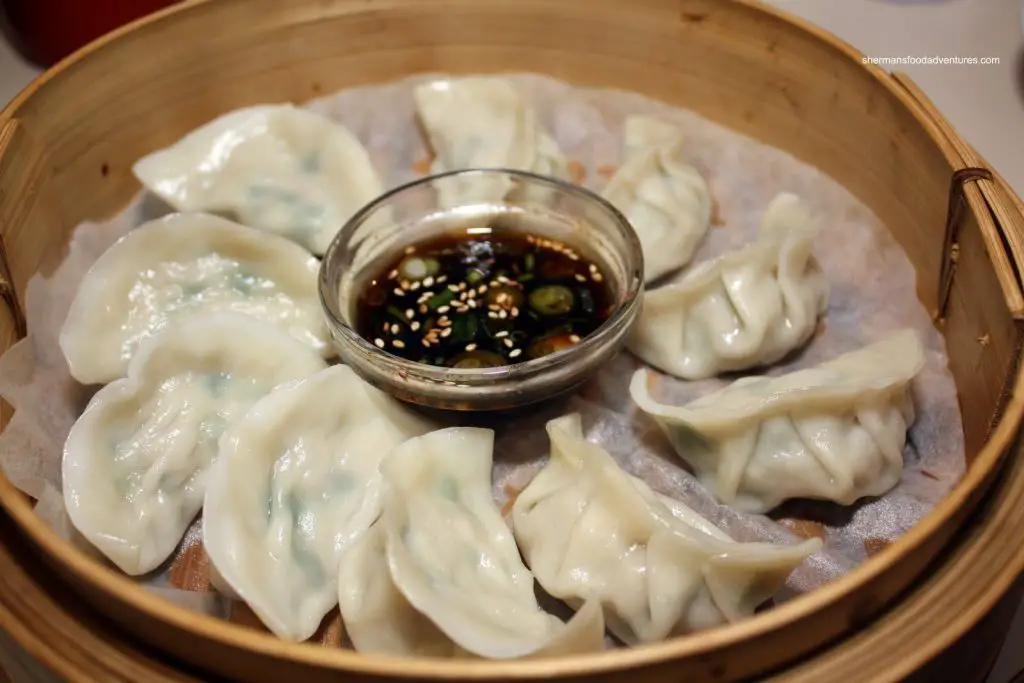
Mandu are dumplings in Korean cuisine. Mandu can be steamed, boiled, pan-fried, or deep-fried. There are variety of styles across regions in the Korean peninsula. Mandu were long part of Korean royal cuisine, but are now found in supermarkets, restaurants, and snack places throughout Korea.
10. Yaki Mandu
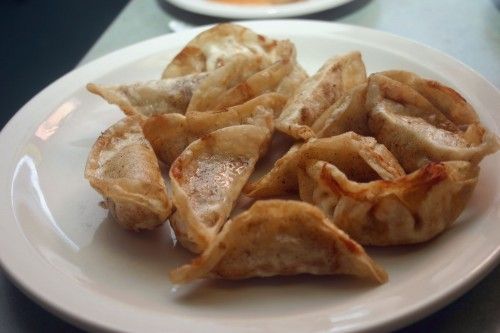
Stuffed with pork, glass noodles and a variety of salty seasonings, these deep-fried mandu’s (dumplings) are mouthwatering. They are most delicious when served piping hot and dipped in soy vinegar sauce.
Read also – 21 Local Dishes to Try When You’re in Delhi
11. Mul Naengmyeon
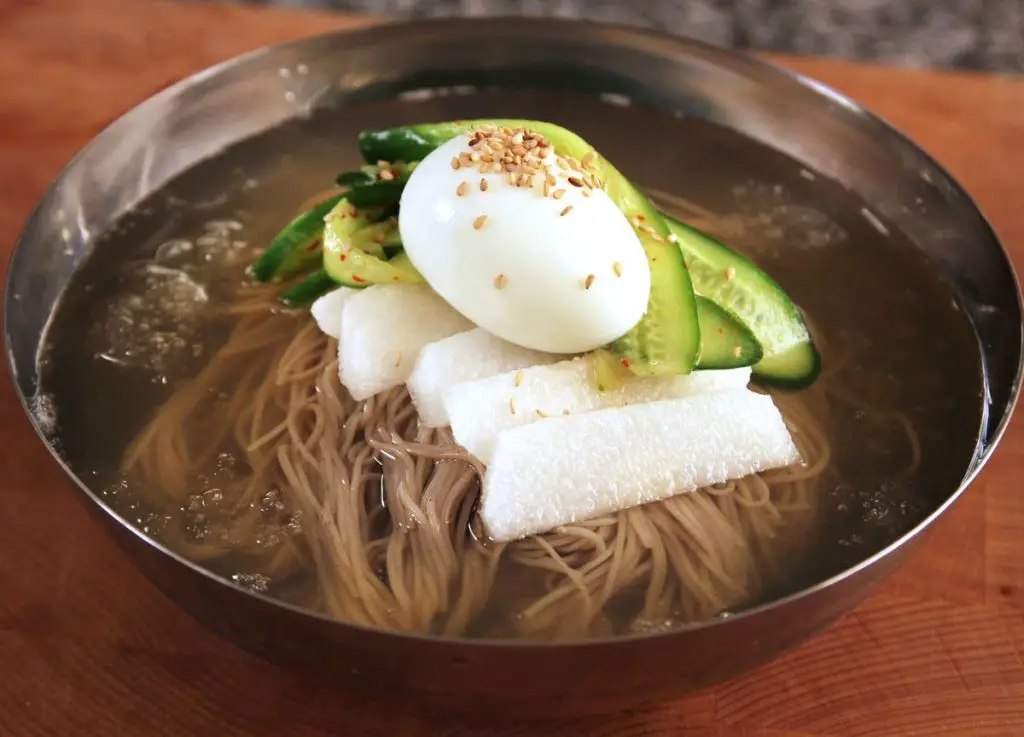
It is fascinating how South Korean food has extremely piping hot dishes as well as extremely cold dishes. Korea is the first place where there’s a noodle dish that’s actually served in ice.
These buckwheat noodles are traditionally from Pyongyang in North Korea, but they are widely available in South Korea as well. The gummy texture of the noodles and the sesame seed essence in the soup enhance the experience.
12. Japchae
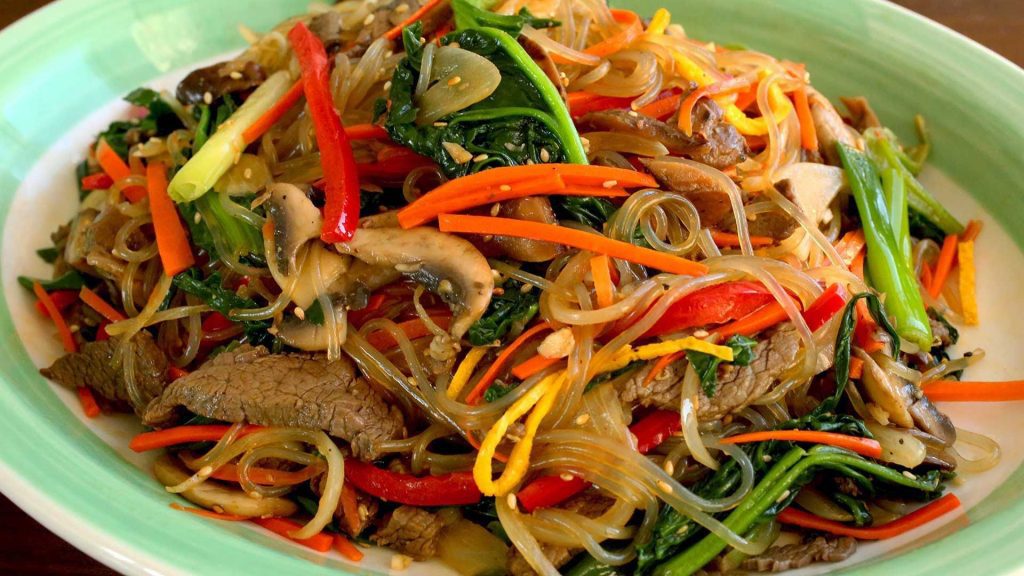
Japchae is a sweet and sour dish consisting of stir-fried glass noodles and vegetables that are common in Korean cuisine. Japchae is originally prepared with dangmyeon (cellophane noodles) made from sweet potato starch; the noodles are topped with vegetables, meat, and mushrooms and seasoned with soy sauce and sesame oil.
Once a royal dish, it is now one of the most popular traditional celebration dishes, often served on special occasions, such as weddings, birthdays, and holidays. It is also well known for feeding crowds at banquets, parties, and potlucks, due to the easy preparation and serving flexibility. japchae can be served warm, at room temperature, or cold from the refrigerator and can be eaten freshly prepared or the next day.
Japchae is commonly served as a side dish, though it may also be considered as a main dish. It is sometimes served in a bowl of rice with meat and is known as japchae-bap.
13. Bindaetteok
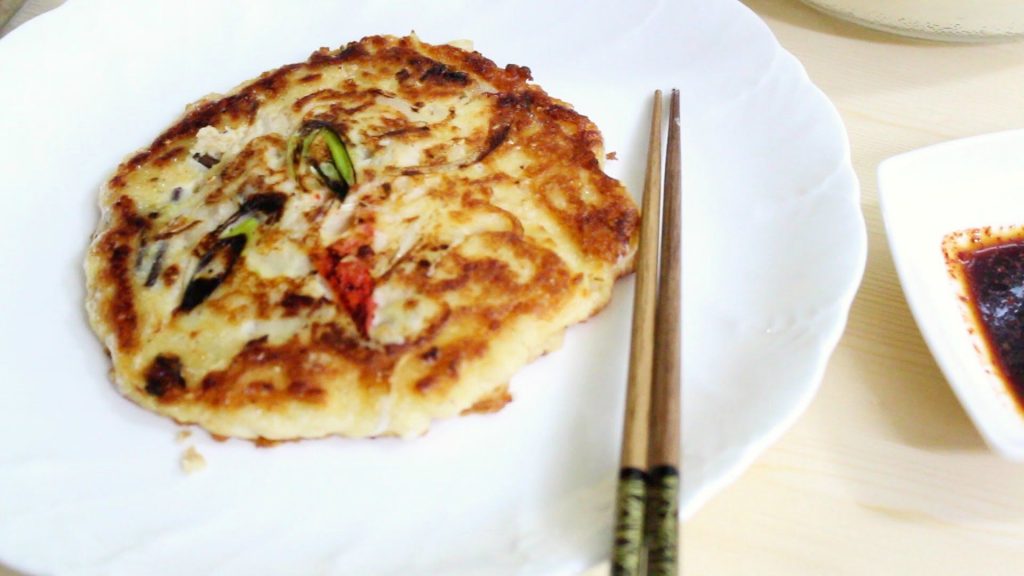
South Korean food includes an array of pancakes. These are not your regular pan-fried hotcakes with a bit of syrup on top, Korean pancakes are salty filled with a lot of ingredients, and fried in lots of oil.
Made from ground mung beans, green onions, and kimchi, these pancakes are deep-fried and served with a vinaigrette sauce.
Approx price: 4000 Won
14. Sundae

Sundae is a variety of blood sausages in Korean cuisine. It is a common street food found in both north and South Korea mainly composed of steaming cow or pig’s intestines stuffed with various ingredients.
Approx price: 6000 won.
15. Gimbap

Gimbap is the name for bite-sized morsels that make for a healthy dish commonly found in tiffins and picnic baskets. It is prepared by rolling strips of sliced egg rolls, vegetables, meat in a layer of rice wrapped by nori seaweed. the tightly wrapped rolls are then sliced and served with soy sauce dips and kimchi.
16. Dakkochi
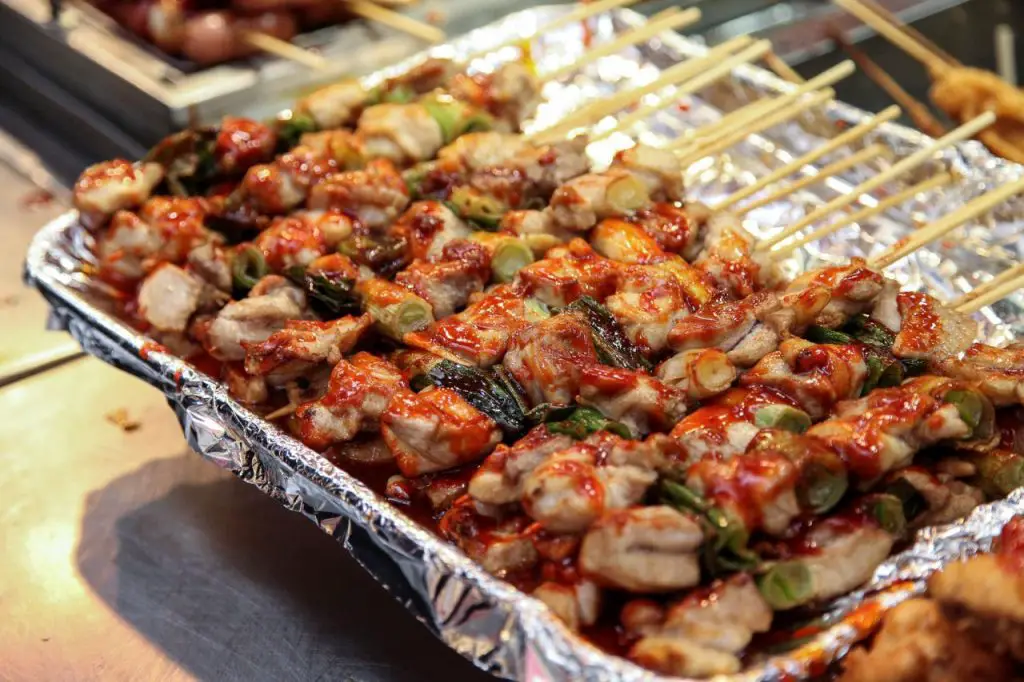
Dakkochi, a fashionable South Korean street food made of minute pieces of chicken and scallions cooked on a skewer. Dak (chicken) is the most eaten type of kkochi (skewered food). Other varieties are sausages, fish cakes or short rib patties called tteok-galbi.
17. Hweori gamja
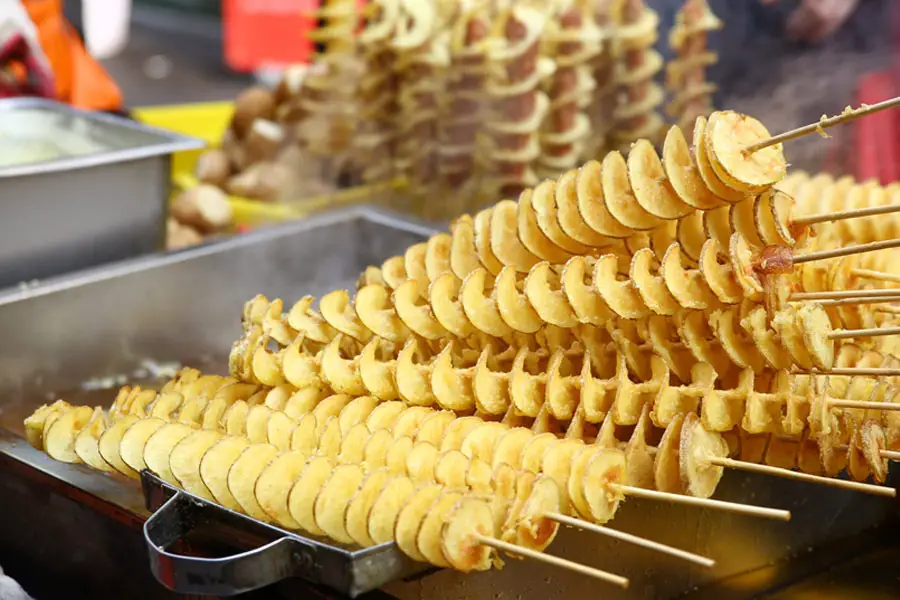
Hweori ganja also called twist potatoes or tornado fries is a well-known street food in South Korea developed by Jeong Eun Suk of Agricultural Hoeori Inc. It is a deep-fried spiral-cut whole potato on a skewer, brushed with different seasonings such as onion, cheese, or honey. Some even have spliced sausages in between.
18. Hotteok
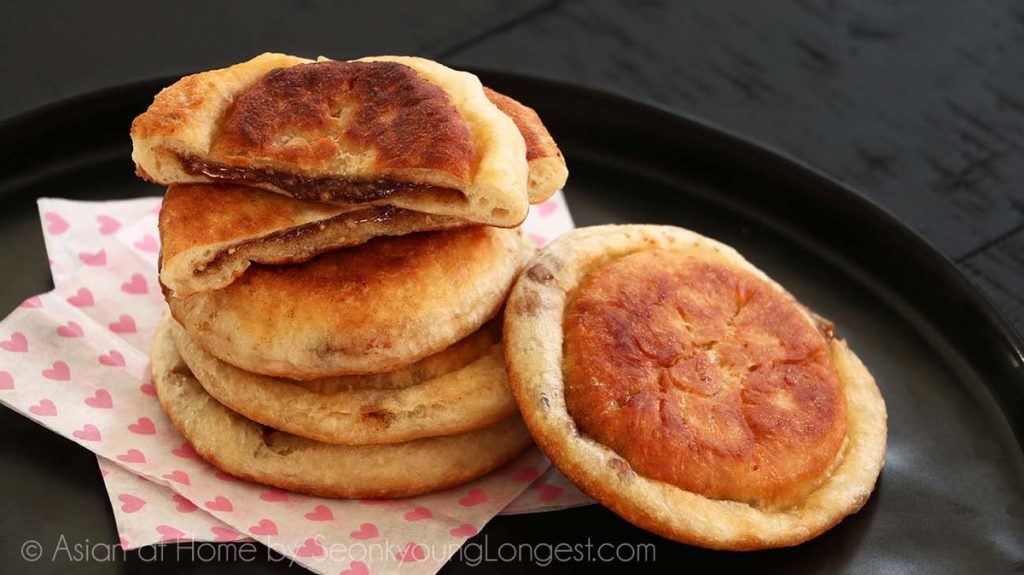
Hotteok is a filled Korean pancake and is of popular street food in Korea. The concoction for hotteok is made from wheat flour, water, milk, sugar, and yeast, then left to rise for many hours. Regular-sized balls of this stiff concoction are filled with a sweet mixture, which may contain brown sugar, honey chopped peanuts, and cinnamon.
The filled concoction is then placed on a grid and pressed into a large circular shape with a special tool with a stainless steel and wooden handle as it cooks. In Korea, pre-made dry hotteok mix is commercially available in plastic packagings. The pre-made mix is also available with a filling consisting of refined sugar and ground peanuts or Sesamum indicum seeds.
19. Twigim
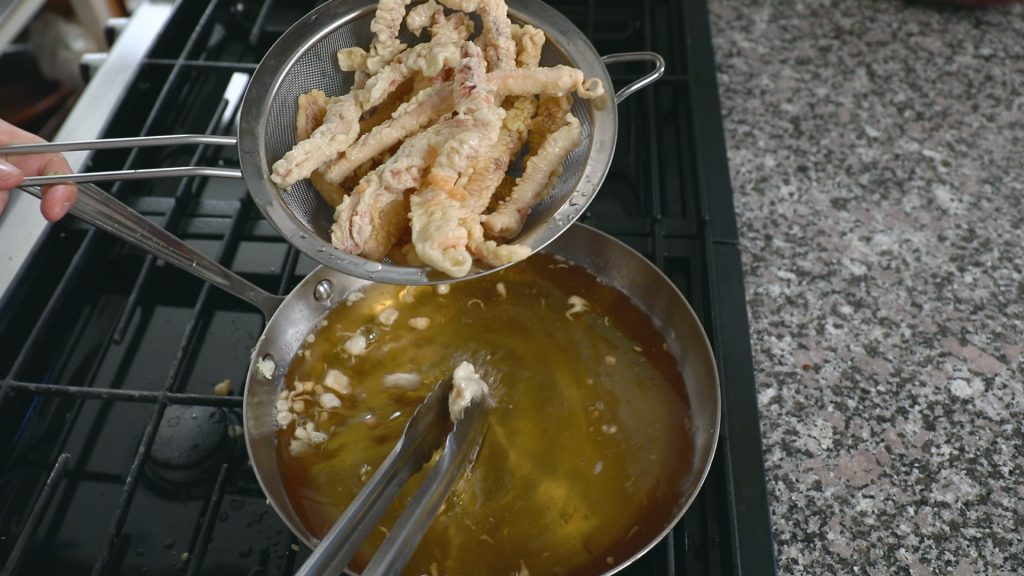
Twigim refers to multiple items like vegetables, meat, squid, etc covered in a thick batter and deep-fried to resemble fritters. Goguma, yache and ojingeo are the most popular varieties.
Read also – 13 Street Foods You Must Try When You Are in Delhi
